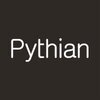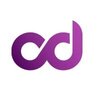
i
Pharma Coders
Filter interviews by
Pharma Coders Interview Questions and Answers
Be the first one to contribute and help others!
Interview questions from similar companies
I applied via Naukri.com and was interviewed in Sep 2024. There were 2 interview rounds.
Test Paper Task, which is to be given in a Word Document.
1. WireFraming
2. User Story Writing
3. Use Case
4. Sequence Diagram
(19 Questions)
- Q1. Education Background and Work Experience
- Q2. How Educational Background Helped in IT Industry
- Ans.
Educational background in IT industry provides foundational knowledge, skills, and problem-solving abilities.
Educational background in computer science or related field helps in understanding technical concepts and languages used in IT industry.
Analytical and critical thinking skills acquired through education are essential for analyzing data and solving complex problems in IT projects.
Project management and communicat...
- Q3. 4 Requirement Development Component required in Req. gathering phases
- Ans.
Requirement development components in requirement gathering phases
Stakeholder analysis
Interviews with stakeholders
Document analysis
Observations
Prototyping
Brainstorming sessions
- Q4. What are Requirement Elicitation technique
- Ans.
Requirement elicitation techniques are methods used to gather and clarify requirements from stakeholders.
Interviews with stakeholders to understand their needs and expectations
Surveys and questionnaires to collect feedback from a larger group of stakeholders
Observations of current processes or systems to identify areas for improvement
Prototyping to visualize requirements and gather feedback early in the process
Brainsto...
- Q5. What is the next step after requirement gathering
- Ans.
The next step after requirement gathering is analyzing the gathered requirements to identify patterns, prioritize needs, and create a solution.
Analyze the gathered requirements to identify patterns and common themes
Prioritize the needs and requirements based on business goals and constraints
Create a solution design or proposal that addresses the identified requirements
Collaborate with stakeholders to validate the propo
- Q6. Difference between Validation & Verification
- Ans.
Validation ensures the product meets the customer's requirements, while verification ensures the product is built correctly.
Validation is checking if the right product is being built, while verification is checking if the product is being built right.
Validation involves evaluating the product against customer requirements, while verification involves checking the product against specifications.
Validation is subjective ...
- Q7. What is [project initiation plan
- Ans.
A project initiation plan is a document that outlines the objectives, scope, and deliverables of a project.
Defines the purpose and goals of the project
Identifies key stakeholders and their roles
Outlines the project scope and constraints
Includes a high-level timeline and budget estimate
Provides a roadmap for project execution
- Q8. Roles of different Stakeholders in the Business Analysis process
- Ans.
Stakeholders in business analysis include project sponsors, end users, developers, and testers.
Project sponsors provide funding and support for the project.
End users provide input on requirements and usability.
Developers implement the solutions based on requirements.
Testers ensure the quality of the final product.
Other stakeholders may include managers, customers, and regulatory bodies.
- Q9. What is RACI metrics
- Ans.
RACI metrics are used to define roles and responsibilities within a project or organization.
RACI stands for Responsible, Accountable, Consulted, and Informed
It helps clarify who is responsible for what tasks and decisions
Example: R - John is responsible for data analysis, A - Sarah is accountable for project success, C - Mark is consulted for technical expertise, I - Emily is informed of project updates
- Q10. What is RTM metrics
- Ans.
RTM metrics refer to the metrics used to track and measure the requirements traceability matrix.
RTM metrics help in tracking the progress of requirements throughout the project lifecycle.
They measure the coverage of requirements, identify gaps, and ensure all requirements are met.
Examples of RTM metrics include requirement status (e.g. implemented, in progress, pending), requirement source, and requirement priority.
- Q11. What is the MoSCoW matrix
- Ans.
MoSCoW matrix is a prioritization technique used in project management to categorize requirements into Must have, Should have, Could have, and Won't have.
MoSCoW stands for Must have, Should have, Could have, and Won't have
Must have - essential requirements that are critical for project success
Should have - important requirements that are high priority but not critical
Could have - desirable requirements that are nice to...
- Q12. How to prioritize the requirement
- Ans.
Requirements should be prioritized based on business value, impact on stakeholders, and feasibility.
Identify and prioritize requirements that align with the organization's strategic goals.
Consider the impact on stakeholders and prioritize requirements that address their needs.
Assess the feasibility of implementing each requirement and prioritize those that are achievable within constraints.
Use techniques like MoSCoW pr...
- Q13. What are the use cases
- Ans.
Use cases are specific scenarios where a product or service can be used to solve a particular problem or achieve a specific goal.
Identifying business needs and requirements
Improving processes and workflows
Enhancing decision-making through data analysis
Optimizing resource allocation
Increasing customer satisfaction
Reducing costs and increasing efficiency
- Q14. What does it mean by 'Alternate flow of Use Cases'
- Ans.
Alternate flow of Use Cases refers to scenarios in which the main flow of a use case is deviated due to certain conditions or exceptions.
Alternate flow describes deviations from the main flow of a use case
It represents different paths that a use case can take based on conditions or exceptions
These alternate flows are usually documented to ensure all possible scenarios are considered
Examples include error handling, vali...
- Q15. How JIRA is used in project management
- Ans.
JIRA is a project management tool used for tracking tasks, issues, and progress in projects.
JIRA allows users to create and assign tasks to team members
It provides a centralized platform for tracking project progress and deadlines
Users can create custom workflows and dashboards to visualize project status
JIRA integrates with other tools like Confluence and Bitbucket for seamless collaboration
- Q16. Ever Worked on pre-sales? (Effort & Cost estimation)
- Ans.
Yes, I have experience working on pre-sales efforts and cost estimation.
I have worked on creating proposals and estimates for potential clients
I have experience analyzing requirements and determining the effort needed for a project
I have collaborated with sales teams to provide accurate cost estimates
I have used tools and techniques such as cost-benefit analysis and risk assessment in pre-sales activities
- Q17. Explain the previous project where you worked
- Ans.
Implemented a data analytics solution for a retail company to optimize inventory management
Analyzed historical sales data to identify trends and patterns
Developed predictive models to forecast demand and optimize inventory levels
Collaborated with cross-functional teams to implement the solution and train end users
- Q18. What is Business Process Modeling
- Ans.
Business Process Modeling is the visual representation of a business process to analyze, improve, and optimize its efficiency.
It involves creating diagrams or flowcharts to illustrate the steps, activities, and decisions involved in a business process.
Business Process Modeling helps in identifying bottlenecks, redundancies, and inefficiencies in a process.
It can be used to simulate different scenarios and analyze the i...
- Q19. This company is in the Power Sector, How will you work in this new domain?
- Ans.
I will leverage my analytical skills to understand the unique challenges and opportunities in the Power Sector and collaborate with stakeholders to drive effective solutions.
Conduct thorough research on the Power Sector to understand industry trends, regulations, and key players
Collaborate with internal teams and stakeholders to gather requirements and identify pain points
Utilize data analysis and modeling techniques t...
Interview Preparation Tips
Skills evaluated in this interview

Databricks Engineer Interview Questions & Answers
Fragma Data Systemsposted on 26 Dec 2024
I applied via Company Website and was interviewed in Nov 2024. There was 1 interview round.
(4 Questions)
- Q1. Self introduction
- Q2. Windows function and how you used
- Ans.
Window functions are used to perform calculations across a set of table rows that are related to the current row.
Window functions are used in SQL to perform calculations on a specific subset of rows related to the current row.
They are often used with aggregate functions like SUM, AVG, and COUNT to calculate running totals, moving averages, and rankings.
Examples of window functions include ROW_NUMBER(), RANK(), LEAD(),
- Q3. Sql Coding questions. Window functions with joins.
- Q4. Pyspark code for how you connect the data to ADLS with doing partition
- Ans.
Use PySpark code to connect data to ADLS with partitioning
Use SparkSession to create a Spark application
Set the configuration for ADLS storage account and container
Read data from ADLS using Spark DataFrame API
Partition the data based on a specific column while writing back to ADLS

Order Management Specialist Interview Questions & Answers
Thryve Digitalposted on 8 Jan 2025
I was interviewed in Dec 2024.
(2 Questions)
- Q1. Tell about yourself
- Q2. About your experience
(1 Question)
- Q1. How you handle the escalation
(1 Question)
- Q1. Salary discussion

Hardware Design Engineer Interview Questions & Answers
Mantra Technologiesposted on 8 Jan 2025
I applied via Recruitment Consulltant and was interviewed in Dec 2024. There was 1 interview round.
(2 Questions)
- Q1. DC DC power supply and their details
- Q2. Inductor and common mode choke parameters and usage
Interview Preparation Tips
- Microcontroller

I applied via campus placement at JSS Academy of Technical Education, Noida and was interviewed in Oct 2024. There were 3 interview rounds.
PEN PAPER round consisting of three coding and c/c++ output based questions.
(2 Questions)
- Q1. OOPS concepts , javascript
- Q2. Projects related questions
(2 Questions)
- Q1. Behavioural questions
- Q2. Resume , internship related questions
Interview Preparation Tips
- Resume

I applied via LinkedIn and was interviewed in Nov 2024. There was 1 interview round.
(2 Questions)
- Q1. Architecture of Kubernetes?
- Ans.
Kubernetes is an open-source container orchestration platform that automates the deployment, scaling, and management of containerized applications.
Kubernetes follows a master-slave architecture with a master node that controls multiple worker nodes.
Master node components include API server, scheduler, controller manager, and etcd.
Worker node components include kubelet, kube-proxy, and container runtime (e.g. Docker).
Ku...
- Q2. Scenario based Questions

Senior Salesforce Developer Interview Questions & Answers
WarpDrive Tech Worksposted on 6 Aug 2024
(2 Questions)
- Q1. Asked Scenario based question
- Q2. Scenario based question asked

Project Controller Interview Questions & Answers
Buoyancy Consultantsposted on 16 Aug 2024
(2 Questions)
- Q1. Total experience
- Q2. How will you update client on regular basis?
- Ans.
I will update clients through regular progress reports, meetings, emails, and phone calls.
Provide regular progress reports detailing project status and milestones
Schedule regular meetings to discuss project updates and address any concerns
Send frequent emails with updates on project progress and next steps
Communicate via phone calls to provide immediate updates or address urgent issues
Interview Preparation Tips

I applied via Job Portal
Question based on dsa
(1 Question)
- Q1. General questions

I applied via Referral and was interviewed in Feb 2024. There were 2 interview rounds.
Setup a cluster and find the bottleneck of performance.
(1 Question)
- Q1. Ways to deal with latency in Cassandra
- Ans.
Ways to optimize latency in Cassandra
Use appropriate data modeling to reduce the number of queries needed
Optimize queries by using appropriate indexes and clustering keys
Tune the Cassandra configuration settings for better performance
Use caching mechanisms like Memcached or Redis to reduce latency
Consider using partitioning strategies to distribute data evenly across nodes
Tell us how to improve this page.
Interview Questions for Popular Designations
Interview Questions from Similar Companies
Pharma Coders Reviews and Ratings
based on 2 reviews
Rating in categories
Kreate Technologies

AARA Technologies

Value Creatives

Coditro
Calculate your in-hand salary
- Home >
- Interviews >
- Pharma Coders Interview Questions





